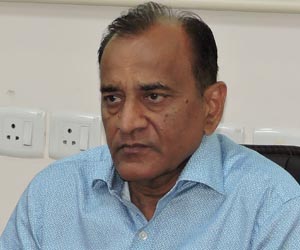Once Prime Minister Narendra Modi and his National Democratic Alliance (NDA) government return to power—as most observers believe it will—it should be more unequivocal in projecting the country’s policy towards China. Perhaps, it is time that New Delhi assertively questions the One-China narrative. This is necessary to counter Beijing’s repeated incursions into India’s internal affairs.
Beijing has been provoking India for far too long. In the most recent case, the Chinese Ministry of Civil Affairs released a list of standardised geographical names in Zangnan—which is what it calls Arunachal Pradesh, and which it claims to be part of south Tibet. Of course, as the External Affairs Minister, S. Jaishankar retorted, a change in name by the Chinese does not make an Indian state a part of China. That said, the mischief cannot go unchecked.
This is not the only case. Every time an Indian minister visits Arunachal Pradesh, China raves and rants, as if someone had entered its region without permission. If anybody from that state decides to visit China, either they do not get the visa or they are given stapled visas. As if this is not enough, China refuses to recognise India’s claim over Pakistan-occupied Kashmir (PoK). This, despite the fact that the Parliament of India has adopted a resolution to the effect that PoK is an integral part of India. On the contrary, China is involved in project constructions in PoK in collaboration with Pakistan. Additionally, it continues to engage in conflicts with India along the Line of Actual Control, and these confrontations have at time taken a violent turn and led to the loss of Indian lives.
Besides, China has taken hold of Aksai Chin, and over the years consolidated its hold over a territory that has historically been part of India. Prime Minister Jawaharlal Nehru had once noted that Aksai Chin was ‘part of the Ladakh region of India for centuries’ and that the border was a ‘firm and definite one which was not open to discussion with anybody.’ If he had any plan to release it from the Chinese hold, it was dashed to the ground following the 1962 debacle.
Therefore, when China continues to needle India, and tango with India’s hostile neighbour, Pakistan, on issues that are critical to India’s sovereignty and security (including Beijing preventing Pakistan-based terrorists who have targeted India, from being designated as global terrorists by the United Nations), there is every justification for New Delhi to reset its China outlook, especially on the One-China policy as well as on the issue of Tibet.
The One-China policy essentially holds that Taiwan, officially the Republic of China, is an integral part of China. Most countries that are members of the United Nations have not given formal recognition to Taiwan as an independent nation, although quite a few of them have unofficial dealings with them through their ‘representatives’ based in that country.
Although India too, historically, tacitly backed the One-China policy, it struck a refreshingly different tone when, during Prime Minister Modi’s first term in office, the then External Affairs Minister Sushma Swaraj said, ‘For India to agree to a One-China policy, China should reaffirm a one-India policy.’ Worried by India’s reluctance to re-endorse its stand, a Chinese envoy more recently remarked, ‘It is hoped that India can honour the One-China principle […]’
His comments came in the backdrop of a high-profile trip that the then US House Speaker Nancy Pelosi made to Taiwan; it was the first such visit of a high-level US official to Taiwan since 1997. Interestingly, while the US supports the One-China policy, it has maintained its readiness to defend Taiwan in case of an attack on it by the Chinese forces.
The Chinese envoy claimed that the One-China principle was the foundation of China’s bilateral relations with other countries, including India. ‘It is the core of China’s interests and a red line and bottom line that cannot be crossed. India was among the first countries to recognise that there is one China,’ he said.
If the One-China principle is the foundation of our relations with China, then it must be argued that a One-India policy should be the core of New Delhi’s ties with China, and that there cannot be any compromise on it. If China continues to dither on this matter, then India should reach out to Taiwan and work to establish formal diplomatic relations with it. Already, both India and Taiwan have trade offices in each other’s capital cities, that also function as de facto embassies.
Sushma Swaraj’s comments were not off-the-cuff. In May 2020, two members of Parliament from the ruling Bharatiya Janata Party attended the swearing-in ceremony of Taiwan’s President through the virtual mode. In the same year, much to China’s displeasure, India condoled the death of Taiwan’s former President Lee Teng Hui, who had played a crucial role in strengthening the island-nation’s independent status. China was also rattled when a BJP leader set up celebratory posters outside the Chinese embassy on the occasion of Taiwan’s national day.
But these gestures were more individual than government-driven. Given that Beijing refuses to change in its hostile position towards on a variety of matters, the union government can do more to send across a sterner message. On Tibet, for example.
For decades, India has gone along with the narrative that China ‘liberated’ Tibet, when the Chinese action was, in fact, a ‘forceful occupation.’ In his book, Nehru, Tibet and China, A.S. Bhasin (a former officer in the External Affairs Ministry), says that Nehru’s stand on the occupation was contradictory. He quotes Nehru from sources, as saying: ‘Nothing should be done which creates complications and which cannot be followed up later. Insistence on recognition to Tibetan independence is likely to affect Tibetan interest adversely and bring Tibet into direct collision with Communist Government of China. GoI [government of India] do not propose to act as instrument of any anti-communist bloc in Tibet or elsewhere.’ It is obvious from this remark that Nehru was more concerned with keeping China and the Communist bloc in good humour, than in ensuring that justice was done to Tibet.
Elsewhere, the author writes, ‘Delhi was reluctant to allow the Tibetan issue to derail its policy of friendship with China. It even advised Nepal to be extremely cautious in its desire to extend help to Tibet.’ So much so, that in a communication to an Indian official he spoke of Tibetan autonomy within the framework of Chinese sovereignty. Over the years, we have learned the outcome of the friendly overtures we made to China, most notably the 1962 event.
The ‘contradiction’ that Bhasin mentioned in his book in Nehru’s approach towards Tibet, is echoed in another book, Tibet: An Unfinished Story, by Leslie Brown Halper and Stefan Halper. The authors refer to ‘peculiarities of Nehru’s personality and the ambiguities infusing his relations with China.’ On Tibet, the authors point out, ‘His policies strained to accommodate two distinct and strongly held views of Tibet: its status and its people.’ They further write that Nehru not only accepted China’s sovereign right over Tibet but also ‘attempted to persuade the Dalai Lama and others of the same.’ Despite all these actions, China remained less than friendly towards India. ‘[All of] This failed to quell China’s territorial ambitions, either then, as the punishing border wars in 1961 and 1962 bore out, or now, as seen in Arunachal Pradesh […]’
Perhaps, the time has come for India to rake up the One-China and the Tibet issues, given that China remains steadfast in questioning India’s sovereignty on not just Arunachal Pradesh but also PoK.
(The paper is the author’s individual scholastic articulation. The author certifies that the article/paper is original in content, unpublished and it has not been submitted for publication/web upload elsewhere, and that the facts and figures quoted are duly referenced, as needed, and are believed to be correct). (The paper does not necessarily represent the organisational stance... More >>
Image Source: https://upload.wikimedia.org/wikipedia/commons/4/49/Potala_-_panoramio_-_Matthew_Summerton_cropped.jpg










Post new comment